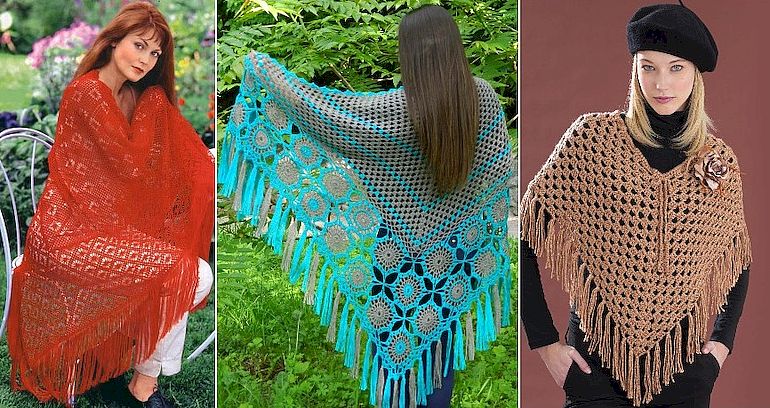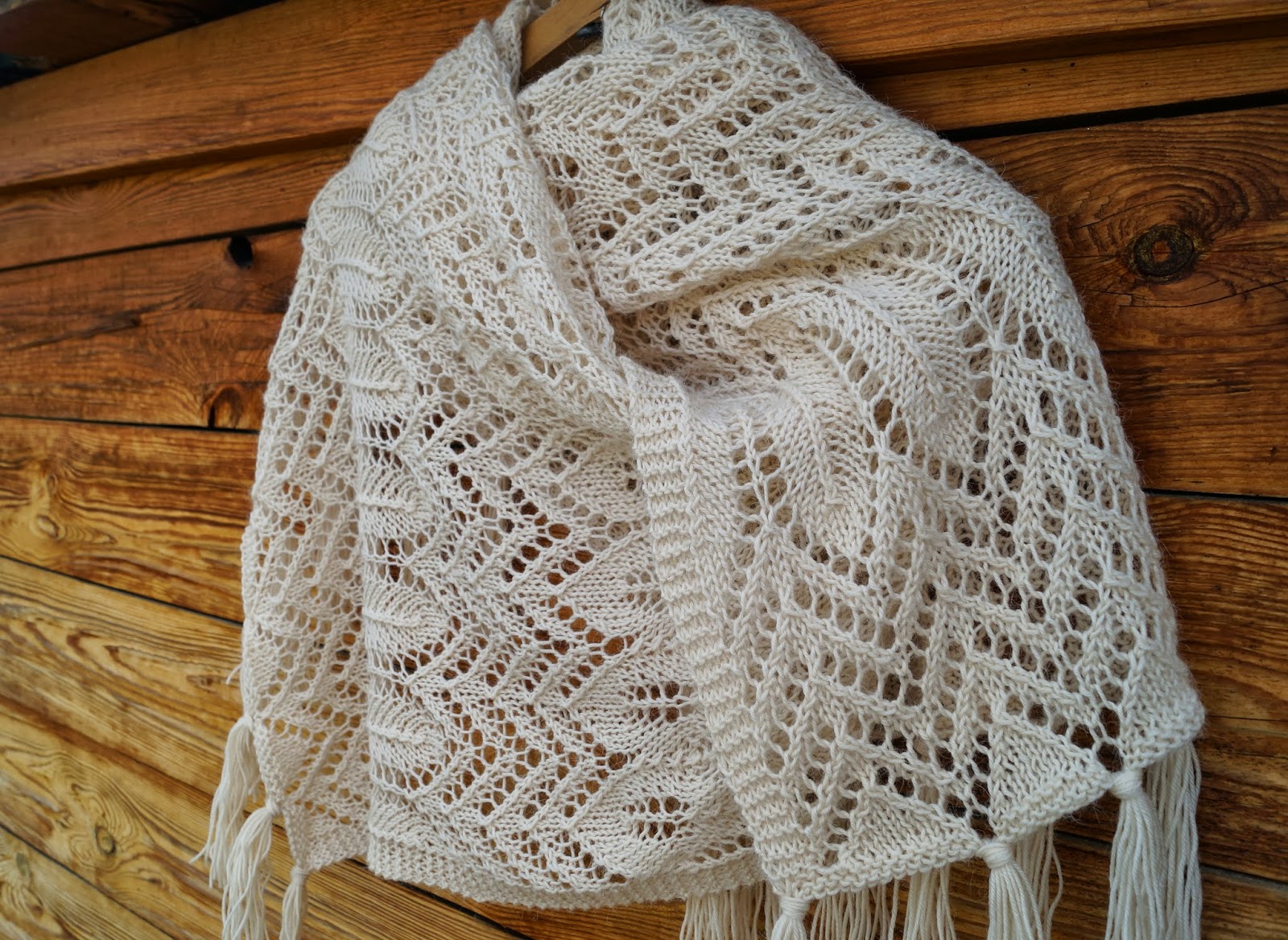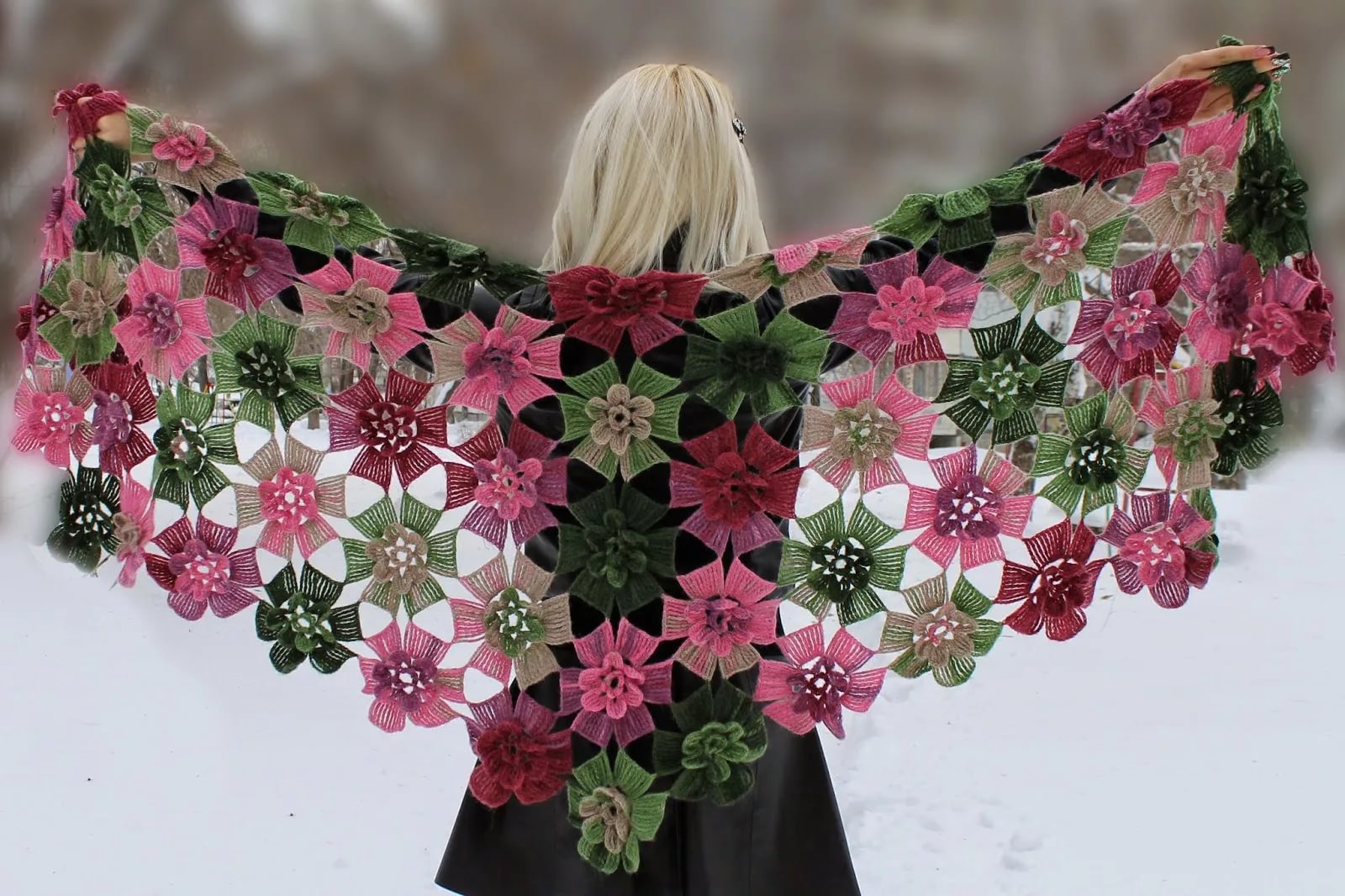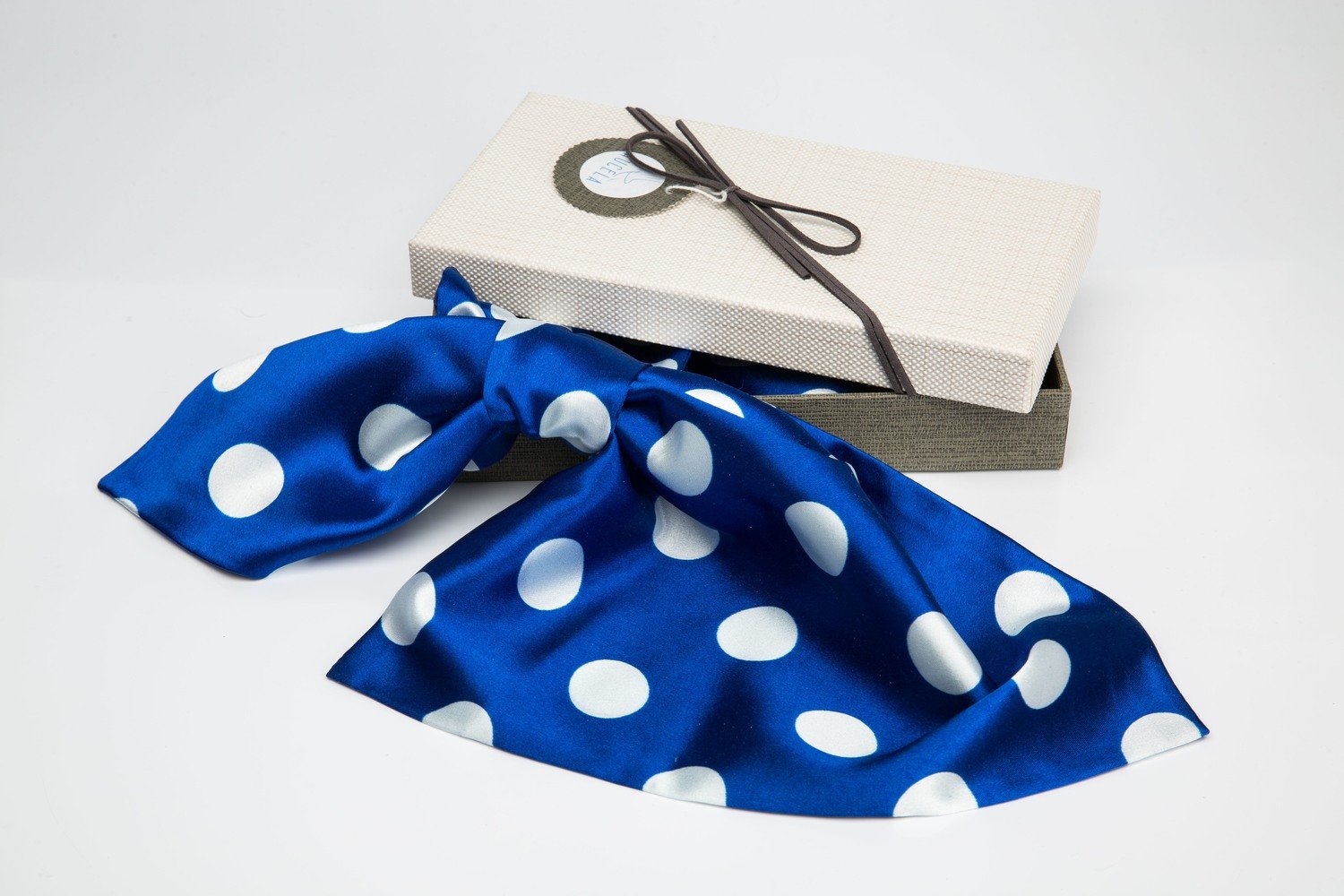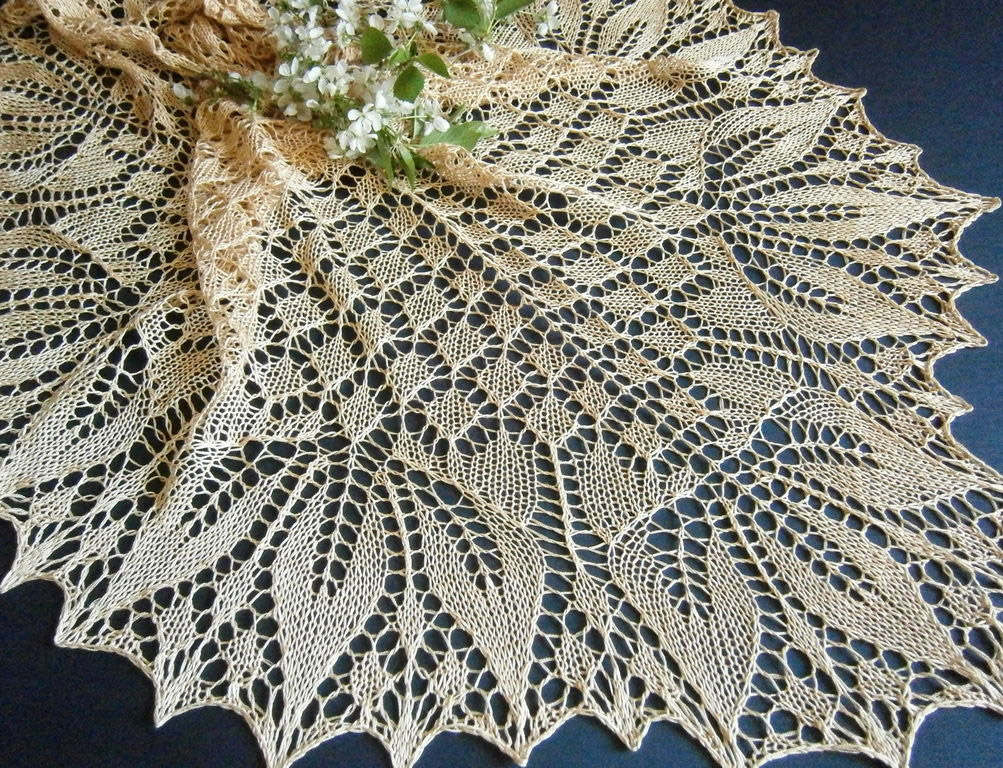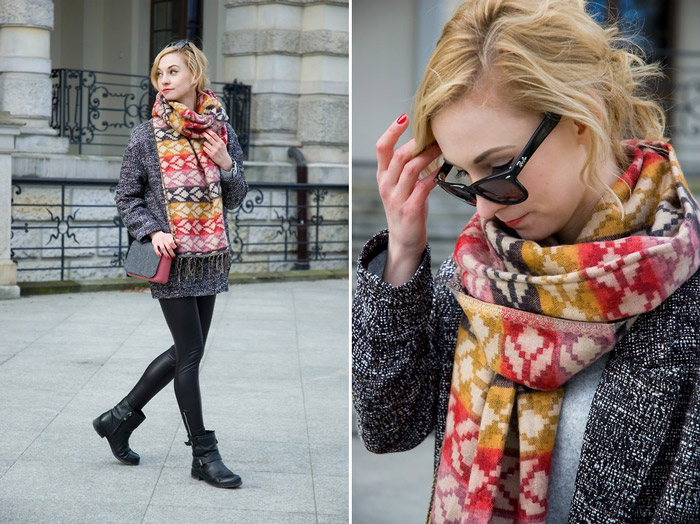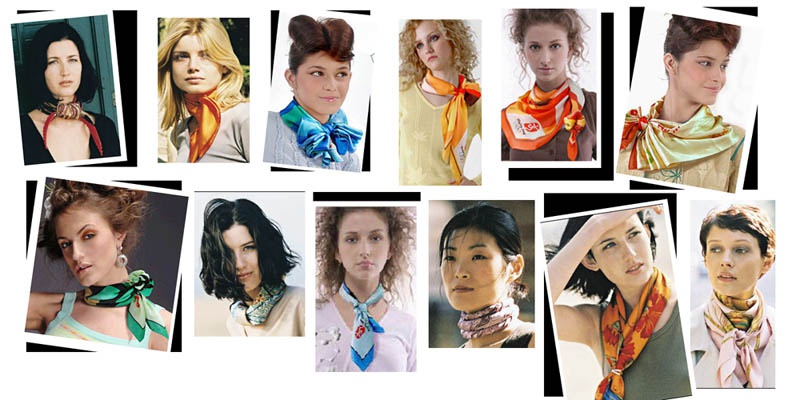An elegant shawl has been an important part of the traditional image of a Russian woman for many centuries. In the modern world, it is considered a category of things that are not subject to fashion trends and adorn the owner regardless of age and time of year. Most shawls are crocheted: an airy, patterned model is intended for evening summer walks, and a warm cape with fluffy tassels helps to keep warm in winter. A variety of patterns, models, colors allows any lady to include this beautiful and comfortable thing in her wardrobe. And for those who dream of knitting a product themselves, patterns, descriptions and step-by-step master classes designed for skilled and novice needlewomen will come in handy.
Popular models
According to shape and size, crocheted shawls can be divided into several main types:
- Triangular shawl - thrown over the shoulders from behind, knitted from the bottom corner or center using the continuous method. Can be made from motifs.
- Half-circle crochet shawl - thrown over the shoulders, is half a circle with or without a notch for the neck. Knitted without separation from the center to the edge.
- Round - knitted in the form of a full circle and thrown over the shoulders with the edge tucked in to form a collar.
- Baktus is a triangular shaped scarf, knitted from the bottom corner or center.
- A poncho is a cape in the shape of a full circle or square with a hole in the middle. It is put on over the head or is made open and thrown over the shoulders.
- A shawl-vest is a product in the shape of a full circle, with two openings for the arms. It is put on like a vest, with one edge folded back to form a collar. Knitting of the shawl starts from the center and goes in a circle.
- A summer cape is an openwork shawl made of thin threads that complements an outfit.
- Transformer - a triangular shawl with holes for the arms, can be worn as a regular scarf, baktus or vest.
Another very popular style is the cape. This is a mini-shawl that is crocheted like a poncho, but has a smaller diameter.
The maximum length of the cape when worn is up to the elbows.
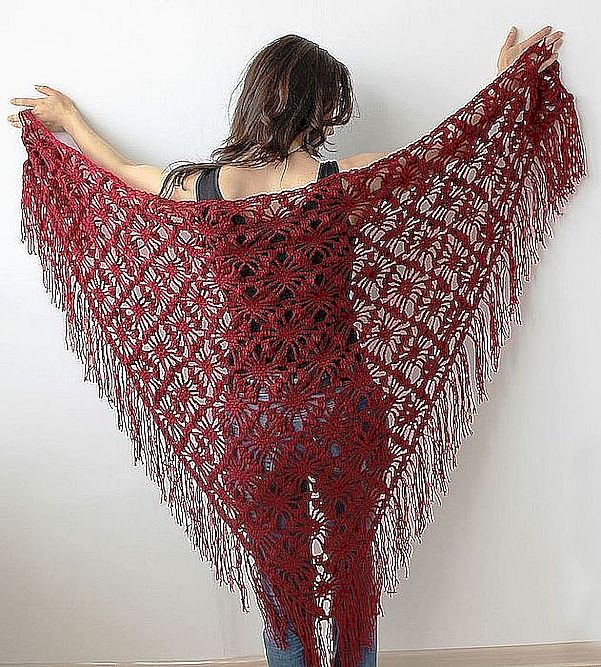




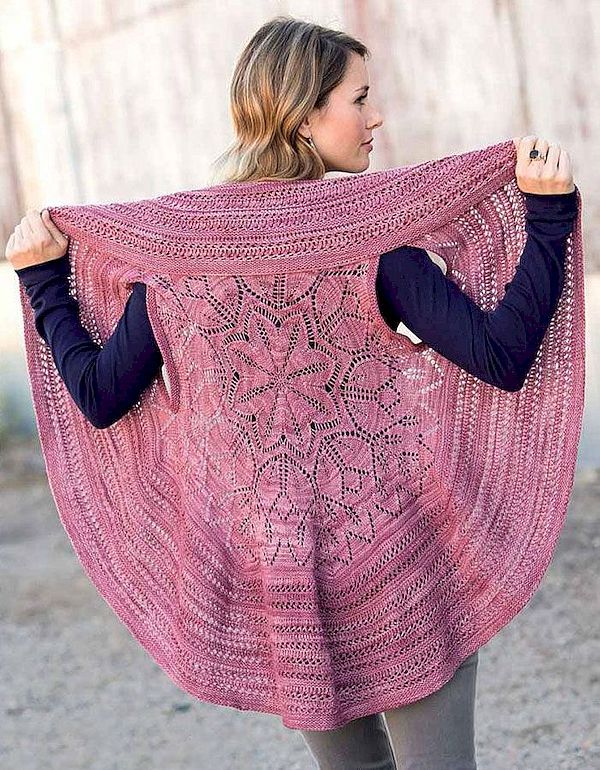


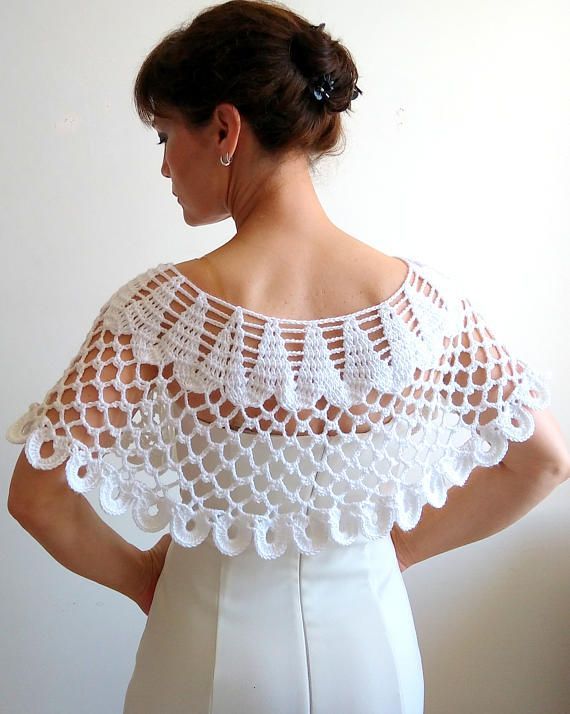
Knitting techniques
After choosing a model, you need to determine for yourself the crochet method, taking into account the purpose of the shawl and the skill level of the needlewoman. Among the popular techniques:
- Simple knitting. It is a fabric of identical loops - columns with or without a yarn over. Suitable for warm, winter models. It is better to take soft threads and knit not too tightly, so that the product can fall from the shoulders and be freely wound around the neck. Color combinations will add decorativeness to such a shawl.
- Openwork knitting. Alternating different types of loops forms a patterned fabric with holes. Due to the thickness of the yarn and the density of the pattern, it is suitable for winter and summer shawls.
- Motifs. A knitted shawl is formed from round, square or triangular fragments connected to each other. Such a cape is usually openwork.
- Fans. A technique of continuous openwork knitting, in which the patterns on the fabric resemble open fans. Looks spectacular from threads of any color when thrown over contrasting clothes.
- Gradient. This method indicates a certain alternation of yarn color, in which a smooth transition from one shade to another is formed on the knitted fabric. The gradient can be from a dark tone to a light one, or vice versa. The transition can be between two contrasting colors or include several shades. When knitting, the craftswoman either selects yarn of different colors herself, or uses ready-made threads with sectional dyeing.
It is also worth paying attention to such an interesting model as the shawl "Edlotia". This unusual technique is suitable for a triangular scarf or baktus. It consists of knitting sections on the canvas that form stripes. They are made in different, usually simple patterns.
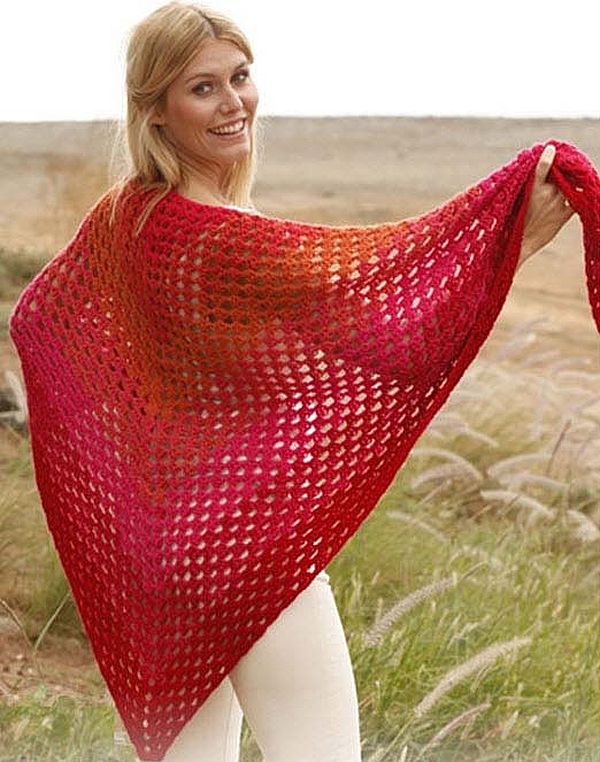


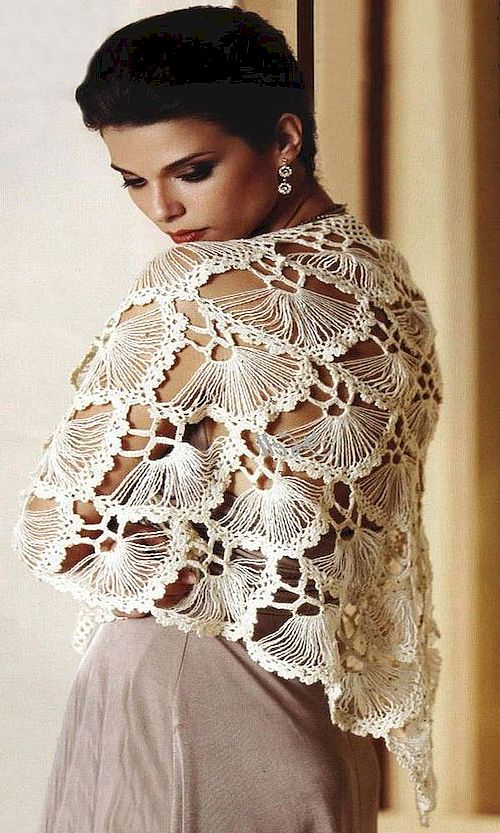
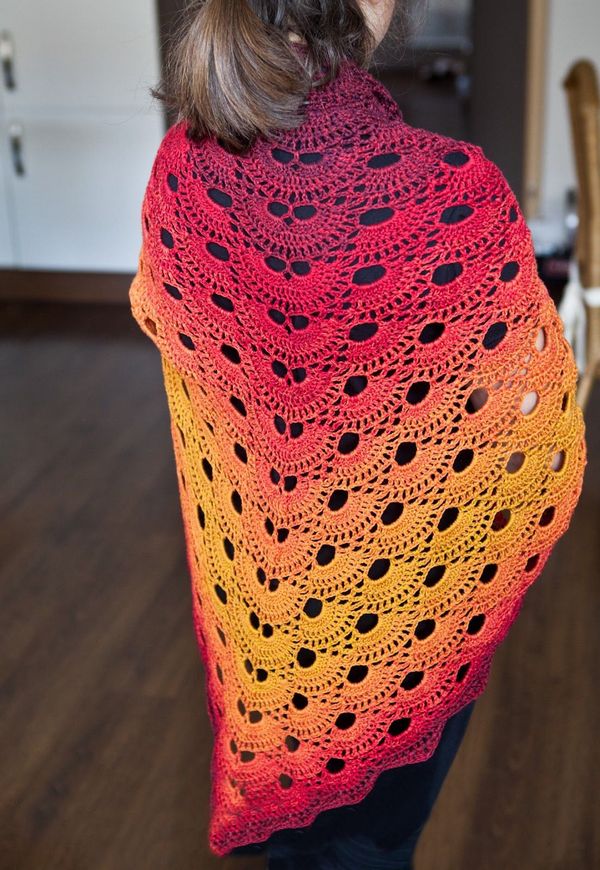
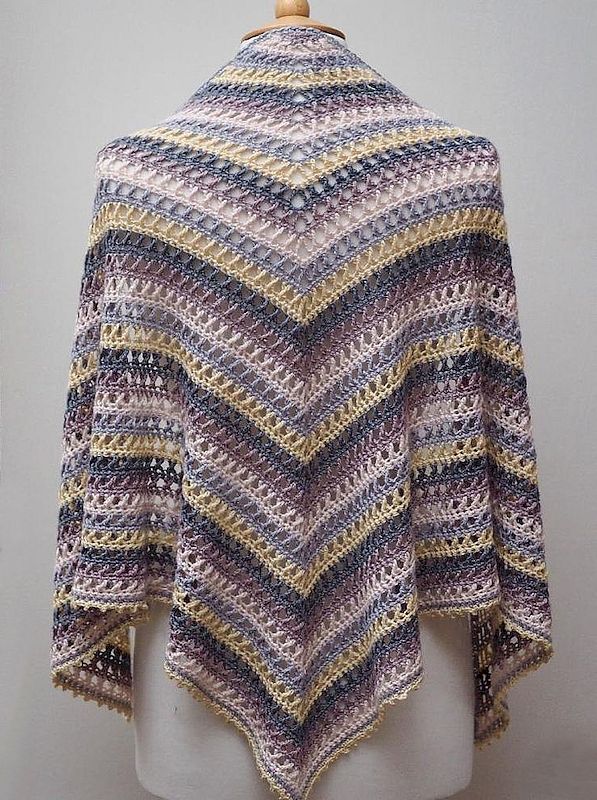
Materials and tools
In order to choose the thickness and composition of yarn for a shawl, you must first determine its purpose. Conventionally, all capes can be divided into winter and summer. The first are made of smooth or pile yarn.
Examples of smooth threads for winter shawls:
- "Alize": "Diva", "Lanagold";
- "Pekhorka": "Australian Merino", "Warm and Cozy";
- "Kamtex": "Premiere";
- "Nako": "Boho";
- "Troitskaya": "Lux".
Smooth threads will be convenient for a beginner knitter, they are easy to work with, clearly highlight the lines of the pattern, do not catch on the hook, and easily unravel if you make a mistake.
An airy shawl made of thin fluffy threads looks delicate and weightless. It not only warms perfectly, but also decorates the owner, creating a romantic and feminine image. The yarn has a minus - the product cannot be worn under outerwear, because pellets will appear on the pile.
Types of wool yarn with down:
- alpaca - the wool of llamas living in South America;
- Angora - a thin yarn made from rabbit wool;
- cashmere - wool from cashmere goats;
- Mohair - wool from Angora goats.
This yarn is a warp thread with fluff attached to it, so it is prone to pilling and abrasion. To avoid this, it is worth choosing pile yarn with a small wool content and not wearing the finished product under outerwear.
Examples of downy wool for winter shawls:
- "Alize": "Angora Gold";
- "YarnArt": "Angora Ram";
- "Nako": "King Mohair";
- "Pekhorka": "Orenburgskaya".
To increase the service life of woolen items, silk, acrylic, nylon, viscose, and capron are included in the yarn. A beautiful shiny fabric is obtained if lurex or metallic is added to the wool.
For knitting summer items, yarn from the following is suitable:
- cotton;
- flax;
- silks;
- viscose;
- bamboo;
- microfiber.
Openwork capes made from these threads do not retain heat, are breathable and absorb moisture. It is worth considering that cotton and linen have stiff fibers, the shawl will not flow and will not be suitable for draping. This yarn is best combined with silk or viscose. The latter, on the contrary, does not hold its shape well, "floats", therefore it needs to be stabilized with another type of thread.
The following are suitable for knitting summer capes from thin yarn:
- "YarnArt": "Summer", "Flowers";
- "Kamtex": "Lotus";
- "Alize": "Bamboo Fine", "Forever".
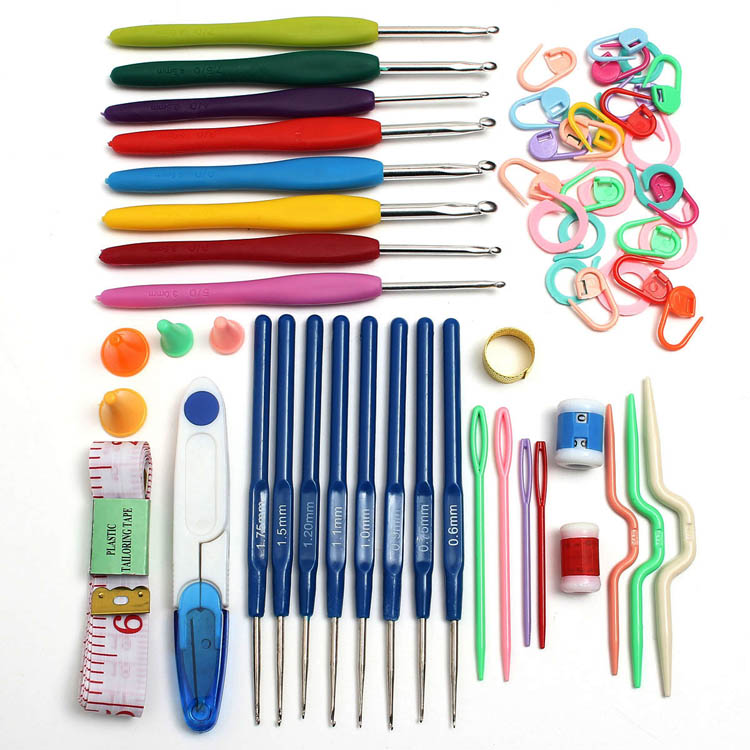

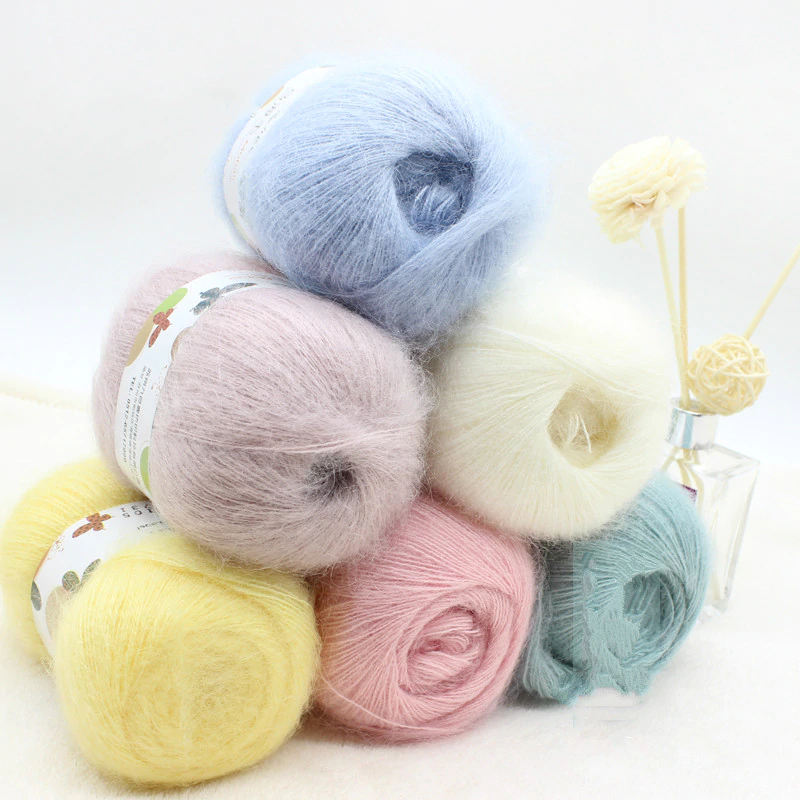
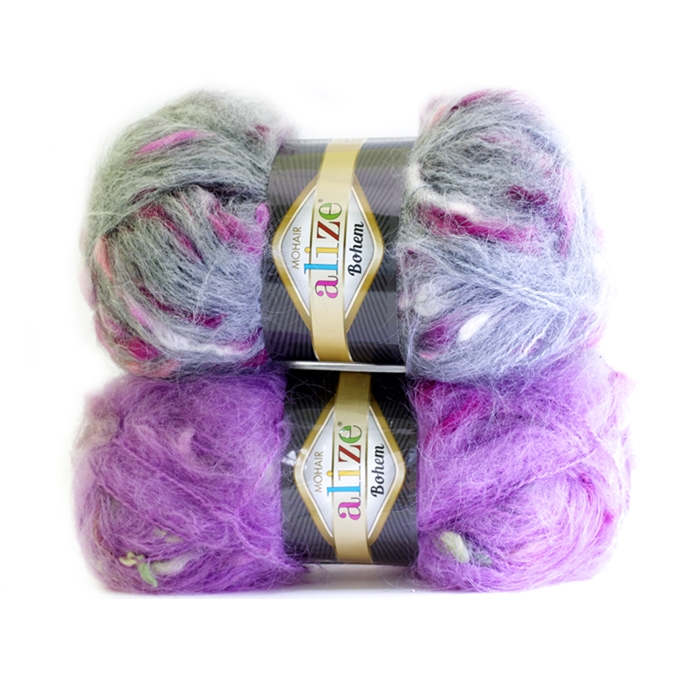
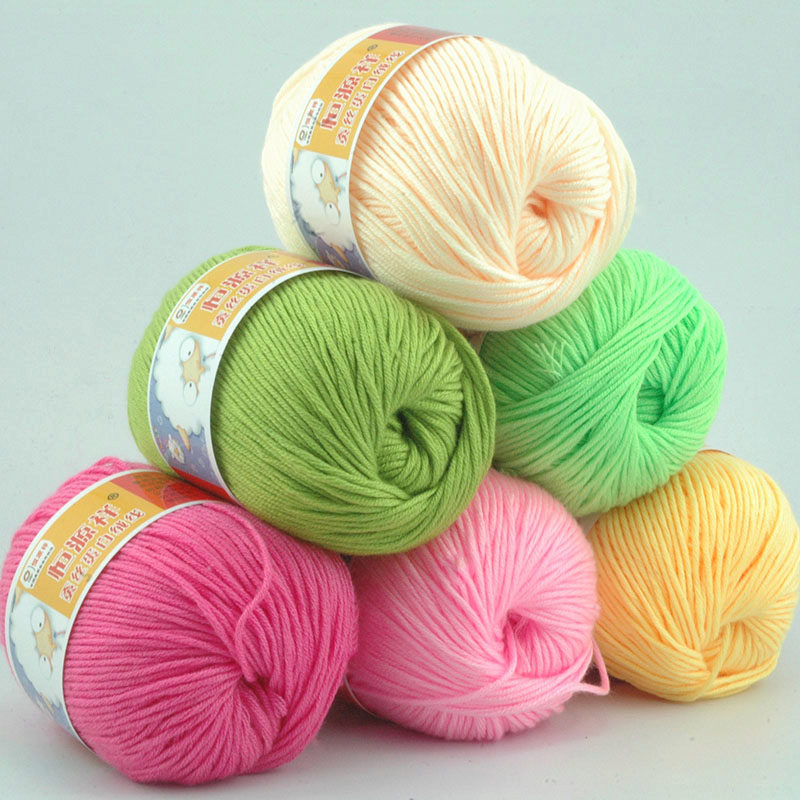

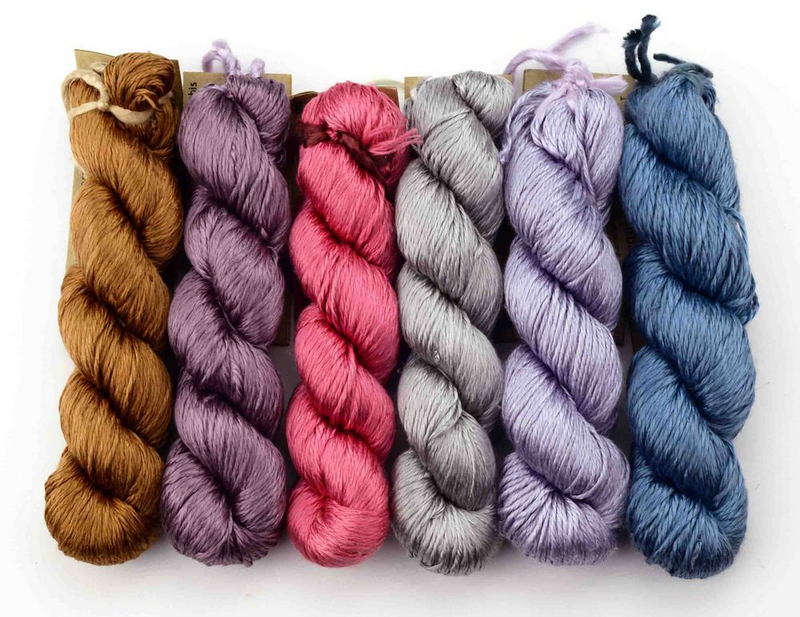
In order for the item to lie softly and fall from the shoulders, you need to consider the thickness of the thread. If the yarn for the shawl is thin, crocheting can be denser. If the threads are thick, loose - they require loose knitting, otherwise it will be impossible to wind the fabric around the neck and make drape.
The color of the yarn depends on the pattern that will be used to knit the shawl. With a uniform fabric without a distinct pattern, sectionally dyed thread will look good. If the crochet shawl pattern includes an ornament, the color transitions will distract attention from the pattern, so single-color threads are more suitable.
To calculate the number of skeins of the selected yarn, you will need to knit a sample and then make simple calculations.
Calculation algorithm (suitable for a triangle crochet shawl):
- We knit a pattern sample measuring 10 x 10 cm.
- We unravel the fabric and measure the footage of thread used on it.
- We determine the size of the base of the shawl (the long side) and its height (the distance from the middle of the base to the opposite corner).
- We calculate the area of the product using the formula for the area of a triangle (half the base multiplied by the height).
- Divide the resulting area by 0.01 and multiply by the length of the sample thread. This is the total length of yarn for the entire shawl.
- Now we divide this length by the footage of the skein of thread. We get the required number of skeins.
When choosing a knitting tool, you should be guided by the data indicated on the yarn packaging. Usually, the hook number that is suitable for the thickness of the thread is indicated there. If the skein came to the craftswoman without packaging, there is a simple way to determine the diameter of the thread. To do this, you need to insert it into the notch of the hook and pull it a little. The tool is considered to be the right size if the notch matches the diameter of the thread.
For dense knitting you need a smaller hook, and accordingly, for large, voluminous patterns the tool should be of a larger diameter.
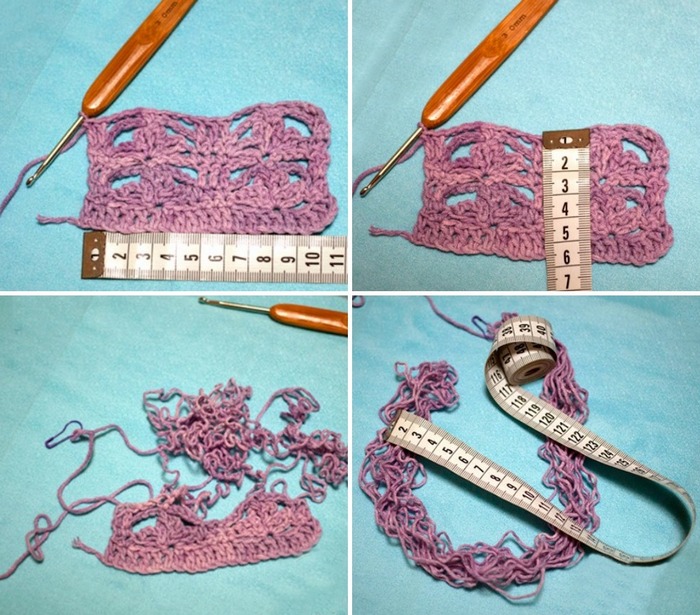
Stages of work taking into account the model
In order for the result of the work to please, craftswomen will need detailed instructions with an explanation of how to knit a shawl of the selected model. Below are simple master classes on the most popular types of crochet capes for beginners. If desired, each product can be supplemented with beautiful tassels or fringe.
Openwork triangle for beginners
The simplest shawl based on the "granny square". You can knit it from single-color or colored threads. In the second case, the color needs to be changed every 2 rows. In total, you will need 600 meters of semi-woolen yarn.
- We start crocheting a shawl with a ring of 6 VP.
- Fan of 3 double crochets (3 dc 2 h), 3 ch, fan of 3 dc 2 h.
- From the outer loop we knit a fan of 3 SC 2 H, 1 VP, in the arch of 3 VP we knit 2 fans of 4 SC 2 H, between which we make 3 VP, then we knit 1 VP, a fan of 3 SC 2 H in the last loop of the row.
All subsequent rows are started and finished similarly. In the spaces between the fans of the previous row, we knit a motif of 3 CT 2 H, and in the central arch of 3 VP - 2 fans of 4 CT 2 H, between which we knit 3 VP. We continue to form an openwork shawl to the desired size.
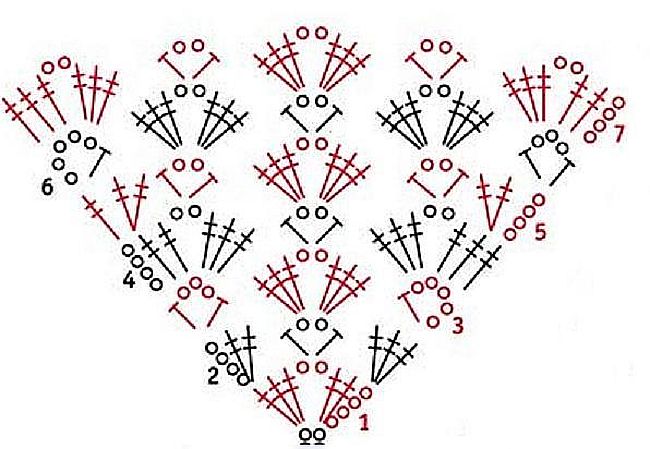

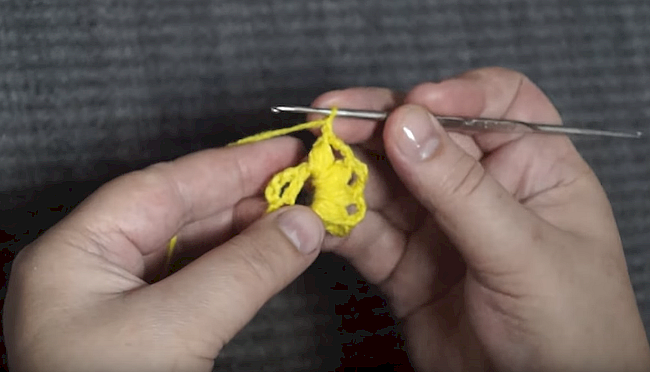



Square cape with floral motifs
The poncho cape consists of separate fragments. To create it, you will need yarn of two or more colors. In each square, rows 1 through 3 are knitted in color, row 4 - in the background color. At the end of the work, all the motifs are sewn together.
Knitting pattern for a square cape:
- We knit a ring of 10 VP.
- 3 VP, 2 STN, 3 VP, then knit 3 groups of 3 STN, between them knit 3 VP. Finish the row with 3 VP, a slip stitch.
- 3 VP, 2 STN, *3 VP, 3 STN*, continue to the end. As a result, under each arch of 3 VP, 2 groups of 3 STN should be connected, between which there is an arch of 3 VP.
- In the next row, one and two groups of 3 STN are alternately knitted into the arch of the previous row. Between all the groups, we perform 3 VP. Thus, 4 corners of the motif are formed.
- In the corner arch we knit 2 groups of 2 STN, between them 5 VP. Then we knit 5 VP, half-column in a row arch, 5 VP, half-column in a row arch, 5 VP. Repeat 3 more times.
In total, you need to knit 128 fragments. They form a square of 12 x 12 motifs. In the center, leave an opening of 4 x 4 motifs. Sew, decorate the edge with fringe.
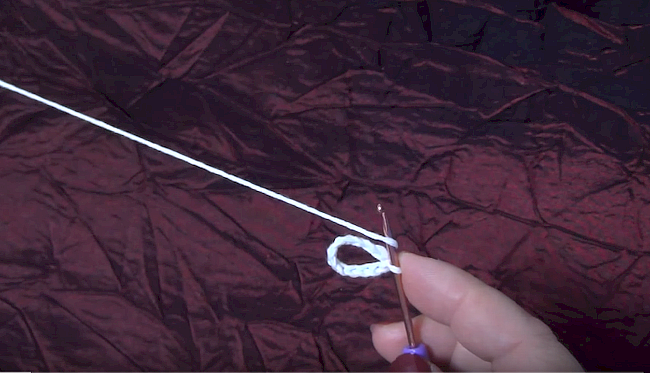
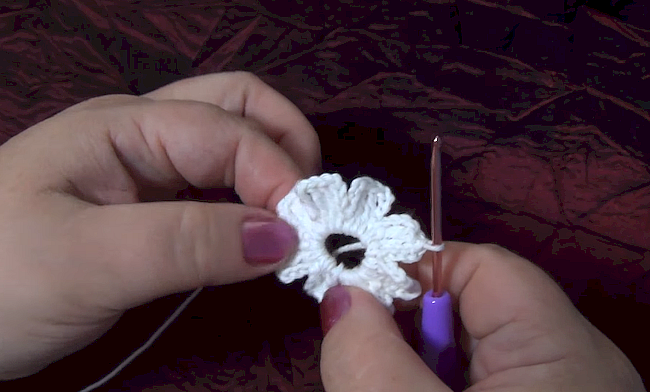


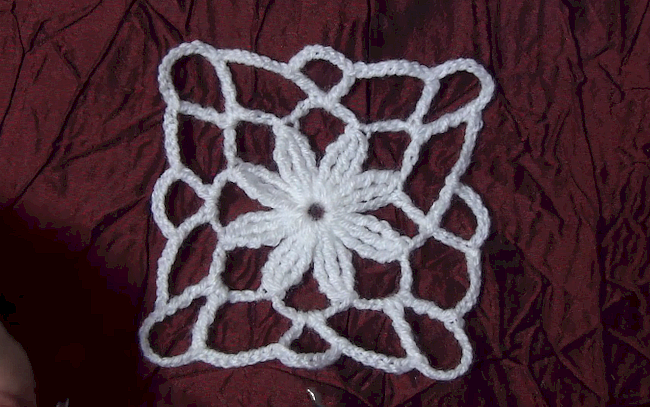

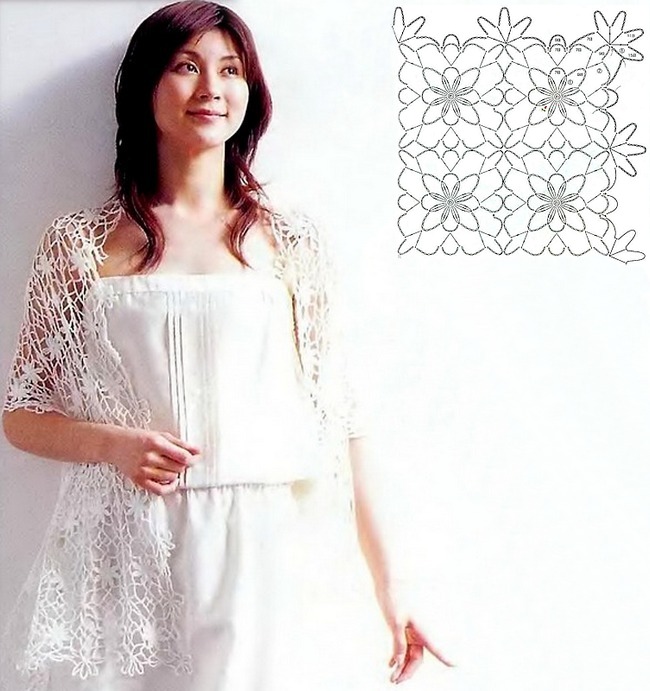
Half-round winter mohair
Depending on the size of the shawl, you will need 600-800 meters of yarn. Unusual semicircular models made of mohair are crocheted and decorated with fringe or trim at the bottom. Work order:
- We knit a ring of 5 VP.
- 3 VP, 3 ST 2 N, 2 VP, 4 ST 2 N.
- 3 VP, fan of 3 STN, 1 VP, fan of 4 STN, 2 VP, fan of 4 STN, 1 VP, fan of 3 STN, 1 STN in the last loop of the row.
- 5 VP, 1 STN in the first loop of the row, 2 VP, *then under 1 VP of the previous row we knit 2 ST 2 H, between which we make an arch of 3 VP, 2 VP*. We finish the row with 2 ST 2 H in the last loop of the row, between which we make an arch of 2 VP.
- We knit the row according to the pattern of row 2. In each arch of 3 VP we knit 2 fans of 4 STN, between which we make an arch of 2 VP. Between the groups of two fans we make 1 VP.
The fifth row should be knitted according to the pattern of the third. Then we continue all these actions, alternating rows, to the desired size.
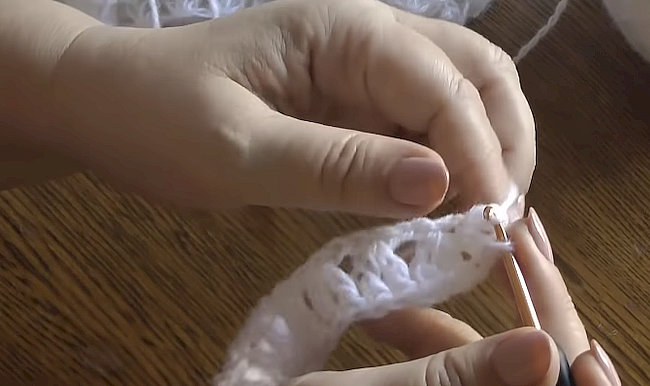



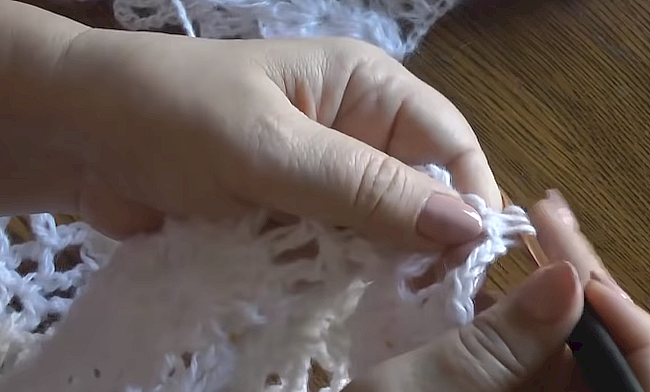
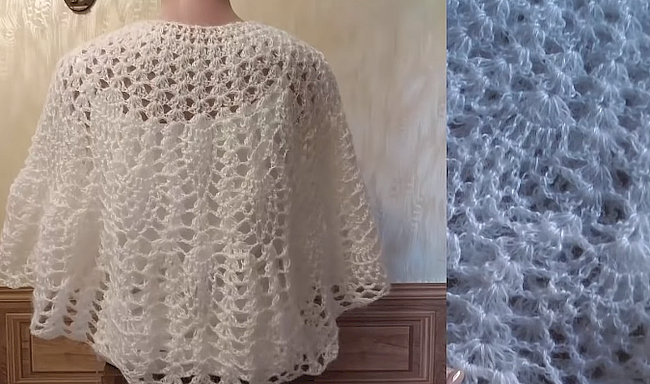
Quick model with simple knitting
This shawl is knitted with chain stitches. The finished fabric will look like an openwork web. Knitting starts from the bottom corner.
Description for beginner craftswomen:
- We knit 9 VP, close into a ring STN.
- Turn the knitting over, 8 VP, half-column into the third loop of the chain, 5 VP, STN into the sixth loop of the chain.
- Turn, 8 VP, PST into the center of the arch, 5 VP, PST into the center of the arch, 5 VP, STN into the third loop of the chain.
All rows start and end the same way. Each row has one more arch added, which creates a triangular shape.
The bottom of the shawl is decorated with fringe.

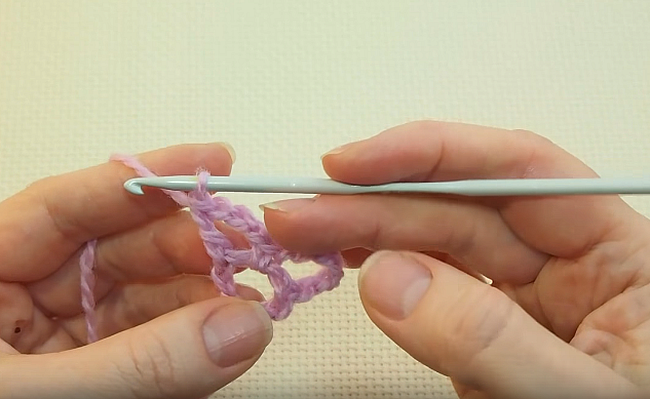
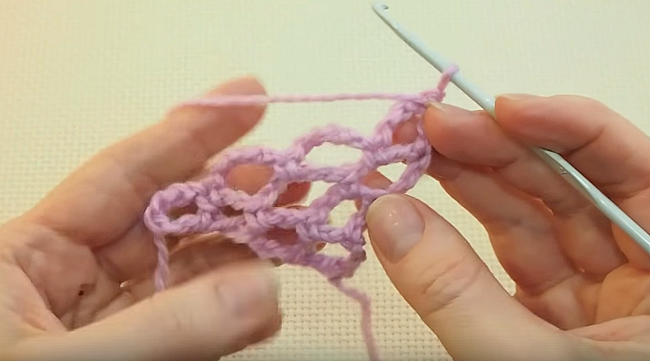

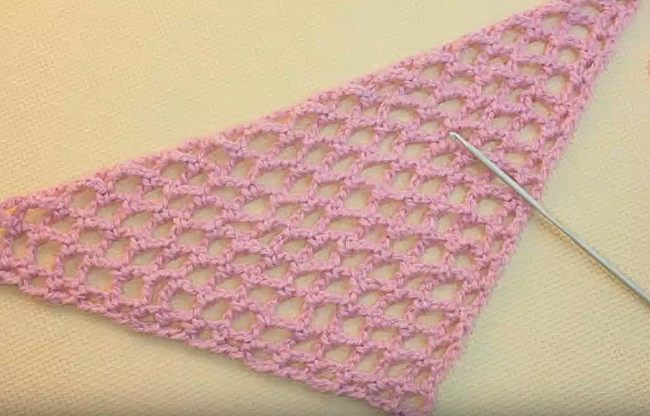
Edlotia
This shawl alternates stripes with different patterns. First, knit 7 rows, then repeat them again. Do this until the product is the desired size.
Knitting algorithm step by step:
- Knit 4 VP, then a fan of 4 STN into the second loop of the chain, 2 VP, a fan of 5 STN into the first loop of the chain.
- 3 VP lift, *2 STN in the same loop, 4 STN, then in the arch we knit 2 STN, 2 VP, 2 STN. Next 4 STN*, fan of 3 STN.
- The beginning and end of the row are the same as in the 2nd row. *8 STN, in the arch 2 STN, 2 VP, 2 STN. Then 8 STN*.
- *STN in the second column of the previous row, fan of 5 STN in the 5th STN of the previous row, STN in the 8th STN, fan of 5 STN in the 11th STN. In the arch we knit 2 STN, 2 VP, 2 STN. After this we knit a row symmetrically to the one already completed.
- *2 VP, STN in the 2nd STN of the previous row, then in each single STN we knit a STN, in the center of the fan of 5 STN we knit 2 STN, between which we make an arch of 3 VP. In the central arch of 2 VP we knit 4 STN, between which we knit 2 VP.
- In this row, over single STN, we knit STN, in the arches of 3 VP we inscribe fans of 5 STN. In the center between the fans we make 2 VP.
- We knit the row similarly to the 5th, but in the central arch we include 2 STN, 2 VP, 2 STN.
Next, repeat rows 2 through 7.
By choosing the right model, yarn, pattern for a shawl and spending a few days on knitting, you can become the owner of a unique item, master a new skill and enjoy the creative process. An openwork accessory, knitted with your own hands, will be a wonderful gift for a loved one and will decorate any woman’s wardrobe.

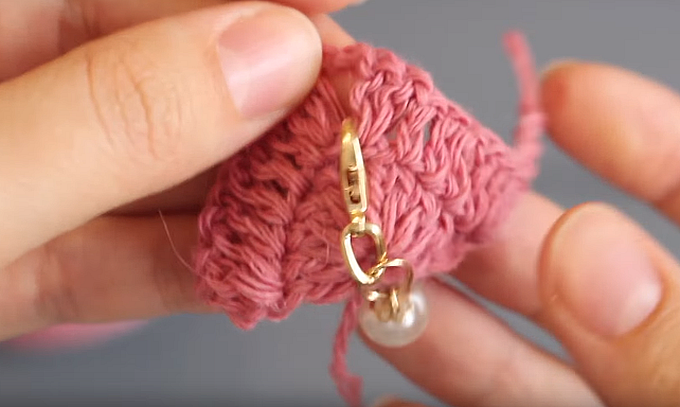
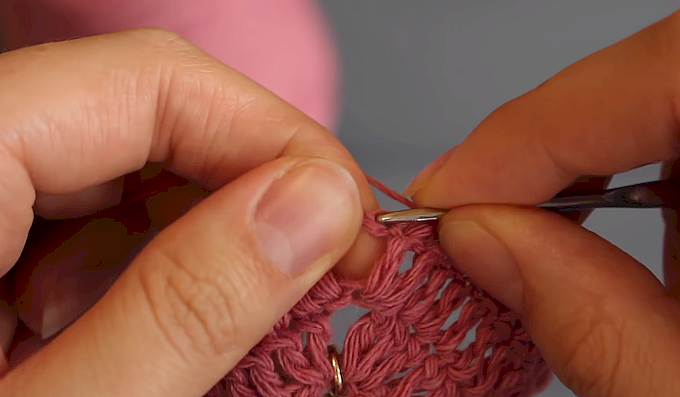
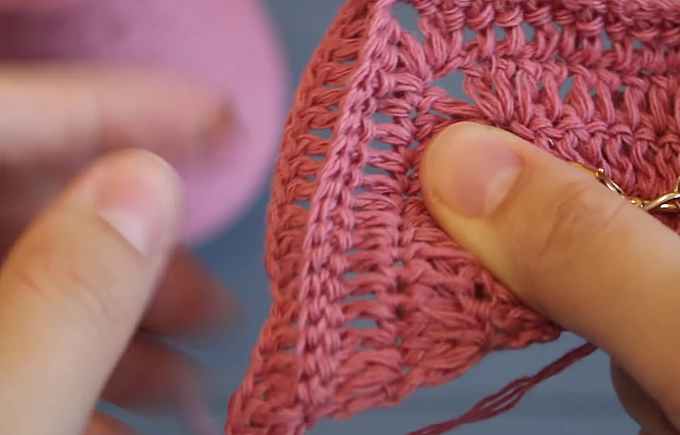

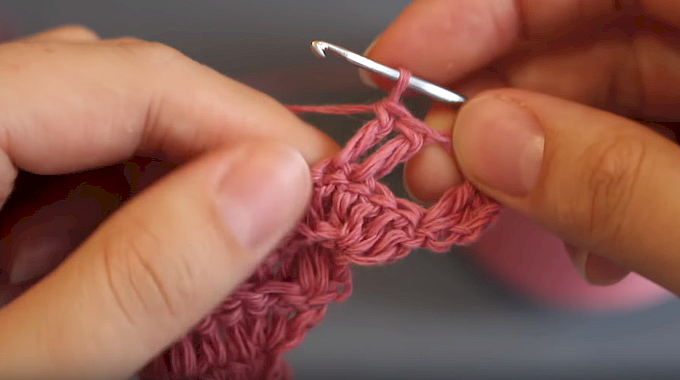
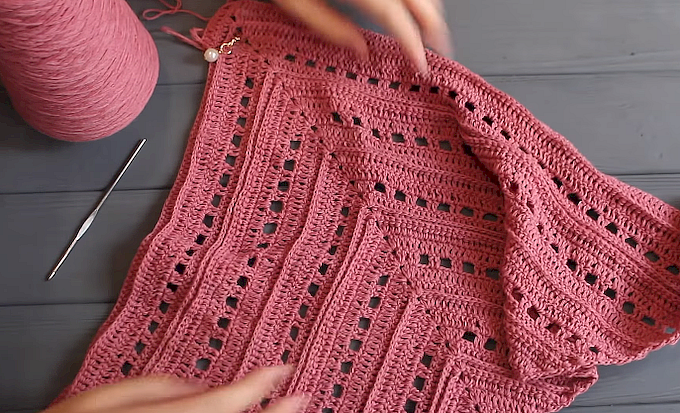
Video

